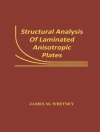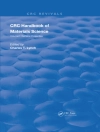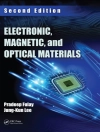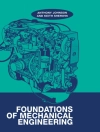This volume contains the refereed and revised papers of the Fourth International Conference on Design Computing and Cognition (DCC’10), held in Stuttgart, Germany. The material in this book represents the state-of-the-art research and developments in design computing and design cognition.
The papers are grouped under the following nine headings, describing both advances in theory and application and demonstrating the depth and breadth of design computing and design cognition: Design Cognition; Framework Models in Design; Design Creativity; Lines, Planes, Shape and Space in Design; Decision-Making Processes in Design; Knowledge and Learning in Design; Using Design Cognition; Collaborative/Collective Design; and Design Generation.
This book is of particular interest to researchers, developers and users of advanced computation in design across all disciplines and to those who need to gain better understanding of designing.
สารบัญ
Preface.- List of Reviewers.- DESIGN COGNITION: A comparison of cognitive heuristics use between engineers and industrial designers, by Seda Yilmaz, Shanna Daly, Colleen Seifert and Richard Gonzalez.- Studying the unthinkable designer, by Ann Heylighen.- Cognitive heuristics in design: Instructional strategies in idea Generation, by Seda Yilmaz, Colleen Seifert and Richard Gonzalez.- An anthropo-based standpoint on mediating objects: Evolution and extension of industrial design practices, by Catherine Elsen, Françoise Darses and Pierre Leclercq.- FRAMEWORK MODELS IN DESIGN : Beyond the design perspective of Gero’s FBS framework, by Caetano Cascini, Luca Del Frate, Gualtiero Fantoni and Francesca Montagna.- Formal model of computer-aided visual design, by Ewa Grabska and Grażyna Ślusarczyk.- Design agents and the need for high-dimensional perception, by Sean Hanna.- A framework for constructive design rationale, by Udo Kannengiesser and John S Gero.- DESIGN CREATIVITY : The curse of creativity, by David Brown.- Enabling creativity through innovation challenges: The case of interactive lighting, by Stefania Bandini, Andrea Bonomi, Giuseppe Vizzari and Vito Acconci.- Facetwise study of modeling activities in the algorithm for inventive problem solving ARIZ and evolutionary algorithms, by Céline Conrardy, Roland De Guio and Bruno Zuber.- Exploring multiple solutions and multiple analogies to support innovative design, by Apeksha Gadwal and Julie Linsey.- Creative and inventive design support system: Systematic approach and evaluation using quality engineering, by Hiroshi Hasegawa, Yuki Sonoda, Mika Tsukamoto and Yusuke Sato.- LINE, PLANE, SHAPE, SPACE IN DESIGN: Line and plane to solid: Analyzing their use in design practice throughshape rules.- Gareth Paterson and Chris Earl.- Interactions between brand identity and shape rules, by Rosidah Jaafar, Alison Mc Kay, Alan de Pennington and Hau Hing Chau.- Approximate enclosed space using virtual agent, by Aswin Indraprastha and Michihiko Shinozaki.- Associative spatial networks in architectural design – Artificial cognition of space using neural networks with spectral graph theory, by John Harding and Christian Derix.- DECISION-MAKING PROCESSES IN DESIGN: Comparing stochastic design decision belief models: Pointwise versus interval probabilities, by Peter C Matthews.- The redefinition of the paradox of choice, by Michal Piasecki and Sean Hanna.- Rethinking automated layout design: Developing a creative evolutionary design method for the layout problems in architecture and urban design, by Sven Schneider, Jan-Ruben Fischer and Reinhard König.- Applying clustering techniques to retrieve housing units from a repository, by Álvaro Sicilia, Leandro Madrazo and Mar González.- KNOWLEDGE AND LEARNING IN DESIGN: Different function breakdowns for one existing product: Experimental results, by Thomas Alink, Claudia Eckert, Anne Ruckpaul and Albert Albers.- A general knowledge-based framework for conceptual design of multi-disciplinary systems.- Yong Chen, Ze-Lin Liu and You-Bai Xie.- Learning concepts and language for a baby designer.- Madan Mohan Dabbeeru and Amitabha Mukerjee.- Organizing a design space of disparate component topologies, by Mukund Kumar and Matthew I Campbell.- USING DESIGN COGNITION: Imaging the designing brain: A neurocognitive exploration of design thinking, by Katerina Alexiou, Theodore Zamenopoulos and Sam Gilbert.- A computational design system with cognitive features based on multi-objective evolutionary searchwith fuzzy information processing, by Michael S Bitterman.- Narrative bridging, by Katarina Borg Gyllenback and Magnus Boman.- Generic non-technical procedures in design problem solving: Is there any benefit to the clarification of task requirements?, by Constance Winkelmann and Winfried Hacker.- Virtual impression networks for capturing deep impressions, by Toshiharu Taura, Eiko Yamamoto, Mohd Yusof Nor Fasiha and Yukari Nagai.- COLLABORATIVE/COLLECTIVE DESIGN : Scaling up: From individual design to collaborative design to collective design, by Mary Lou Maher, Mercèdes Paulini and Paul Murty.- Building better design teams: Enhancing group affinity to aid collaborative deisgn, by Michael A Oren and Stephen B Gilbert.- Measuring cognitive design activity changes during an industry team brainstorming session, by Jeff WT Kan, John S Gero and Hsien-Hui Tang.- DESIGN GENERATION : Interactive, visual 3D spatial grammars, by Frank Hoisl and Kristina Shea.- A graph grammar based scheme for generating and evaluating planar mechanisms, by Pradeep Radhakrishnan and Matthew I Campbell.- A case study of script-based techniques in urban planning, by Anastasia Koltsova, Gerhard Schmitt, Patrik Schumacher, Tomoyuki Sudo, Shipra Narang and Lin Chen.- Complex product form generation in industrial design: A bookshelf based on Voroni diagrams, by Axel Nordin, Damien Motte, Andreas Hopf, Robert Bjärnemo and Claus-Christian Eckhardt.- A computational concept generation technique for biologically-inspired, engineering design, by Jacquelyn KS Nagel and Robert B Stone.- First Author Email Address.- Author Index.
เกี่ยวกับผู้แต่ง
John Gero is a Research Professor at the Krasnow Institute for Advanced Study and at the Volgenau School of Information Technology and Engineering, George Mason University. Formerly he was Professor of Design Science and Co-Director of the Key Centre of Design Computing and Cognition, at the University of Sydney. He is the author or editor of 48 books and over 600 papers and book chapters in the fields of design science, design computing, artificial intelligence, computer-aided design, design cognition and cognitive science. He has been a Visiting Professor of Architecture, Civil Engineering, Cognitive Science, Computer Science, Design and Computation or Mechanical Engineering at MIT, UC-Berkeley, UCLA, Columbia and CMU in the USA, at Strathclyde and Loughborough in the UK, at INSA-Lyon and Provence in France and at EPFL-Lausanne in Switzerland. His former doctoral students are professors in the USA, UK, Australia, India, Japan, Korea, Singapore and Taiwan.
He has been the recipient of many excellence awards including the Harkness Fellowship, two Fulbright Fellowships, two SRC Fellowships and various named chairs. He is on the editorial boards of numerous journals related to design science, computer-aided design, artificial intelligence and knowledge engineering and is the chair of the international conference series
Artificial Intelligence in Design, the new conference series Design Computing and Cognition and the international conference series
Computational and Cognitive Models of Creative Design.
Professor Gero has published books with Springer, Kluwer, North-Holland, Addison-Wesley, and Academic Press amongst others.












